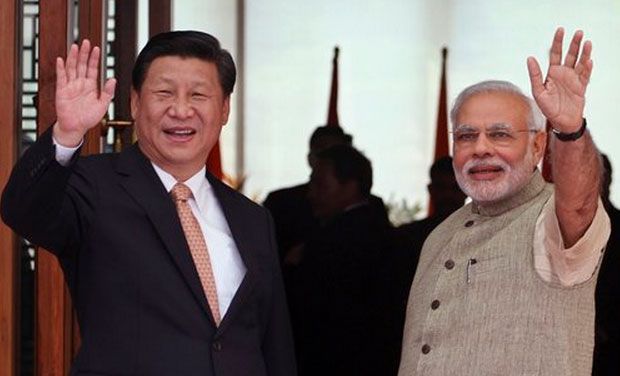The Dragon-Elephant Dance Duet
Shared goals?

NEW DELHI: Indian Prime Minister Narendra Modi’s three-day visit to China has come to an end. The anti-climatic nature of the visit is evinced by the fact that it seems to have failed to have enthused the rest of the world, with the international media largely silent.
The Indian media, on the other hand, portrayed the visit as a warming of ties between the tense neighbours. The Chinese media followed suit, changing the discourse from a skeptical commentary focusing on how Modi was “playing little tricks” over security issues to a more favourable portrayal of "Modi's Nixonian pragmatism refreshing ties" and criticism of the “western elite” jeopardising the "dragon-elephant dance duet."
The dragon and elephant, however, seem to be celebrating in isolation. The visit received hardly any attention in the rest of the world, and surprisingly, in the region, with other South Asian nations, including Pakistan, according the dance duet scant coverage.
The reason perhaps is that the visit, contrary to the dragon’s roar and the elephant’s trumpet, achieved no major breakthrough, apart from the two countries working toward a joint pursuit of wealth. India and China have signed business deals worth $22 billion covering a wide range of sectors including industrial parks, ports and financing. Impressive yes, but the figure includes $20 billion of Chinese investment that was agreed during President Xi Jinping’s visit to India in September.
Whilst this economic partnership has been the central focus of celebration in the two countries, the rest of the world seems to know better. On May 13, the New York Times ran a story on how Modi and Xi “aim to shelve rifts amid economic courtship" but added that it was unlikely that the two countries would be able to shelve contentious issues that have long plagued the bilateral relationship.
The Citizen has cautioned on the optimism surrounding the visit, maintaining that the range of issues that plague India-China relations will be a factor in preventing rapprochement. The first and foremost among these issues is the long-standing border dispute. In March this year, the two countries resumed contentious border talks -- the first such discussion since PM Modi came to power. The two countries share an ill-defined 4,057km (2,520 miles) border that has complicated relations. In fact, border tensions overshadowed a high profile visit of Chinese President Xi Jinping to India in September 2014, for talks with PM Modi. As hundreds of Chinese soldiers moved into Indian territory in Ladakh, bilateral relations between the two countries dipped and India raised “serious concerns” about the transgressions. “Clarification of the Line of Actual Control would greatly contribute to our efforts to maintain peace and tranquillity and I requested President Xi to resume the stalled process of clarifying the LAC,” PM Modi had said at the time.
More recently, a few months ago, China objected to PM Modi’s visit to Arunachal Pradesh, saying that it could add fuel" to the territorial dispute. Chinese Vice Foreign Minister Liu Zhenmin summoned Indian Ambassador Ashok Kantha to say that PM Modi's visit "infringes on China's territorial sovereignty and interests, magnifies the dispute on the border issue and violates the consensus on appropriately handling the border issue."
Arunachal Pradesh is a bone of contention between the two countries, with China maintaining that the border dispute is confined to the area, whereas India claims that China occupies 38,000 square km (14,600 sq miles) of its territory on the Aksai Chin plateau in the west.
The dispute led to the 1962 Sino-Indian War, and has characterised relations between the two countries ever since.
Additionally, PM Modi’s efforts at diplomacy with Japan, Vietnam -- both of which are locked in maritime disputes with China, and the US and some European countries, seems to have not gone down well with the Chinese. India, in turn, is understandably worried about China’s growing influence in South Asia -- which it concerns its own backyard. Most worrying for India, perhaps, is China’s ties with Pakistan. China has pledged millions of dollars in investment in Pakistan, and is working on its “One Belt, One Road” project to connect China to Central Asia and Europe.
Can a shared pursuit of wealth trump these contentious issues? It remains to be seen, but spectators in India and China seem to certainly think so.



